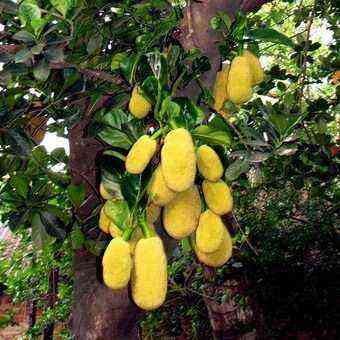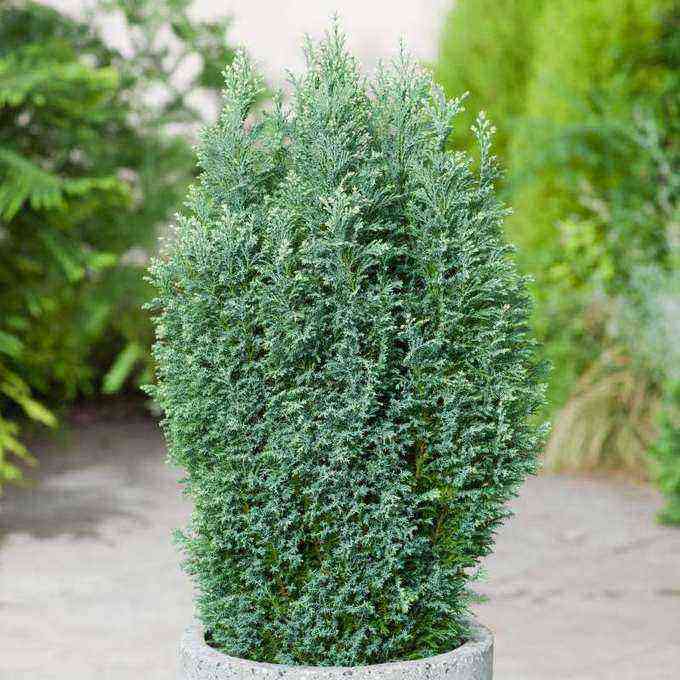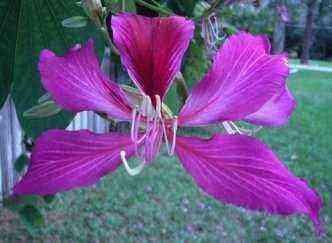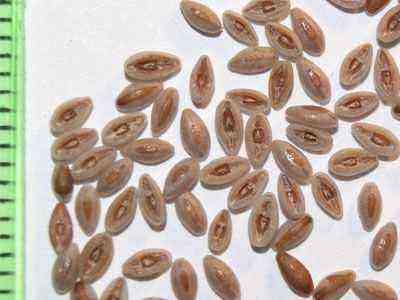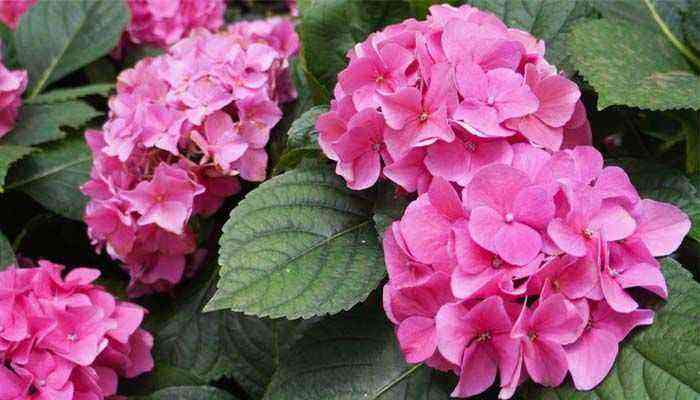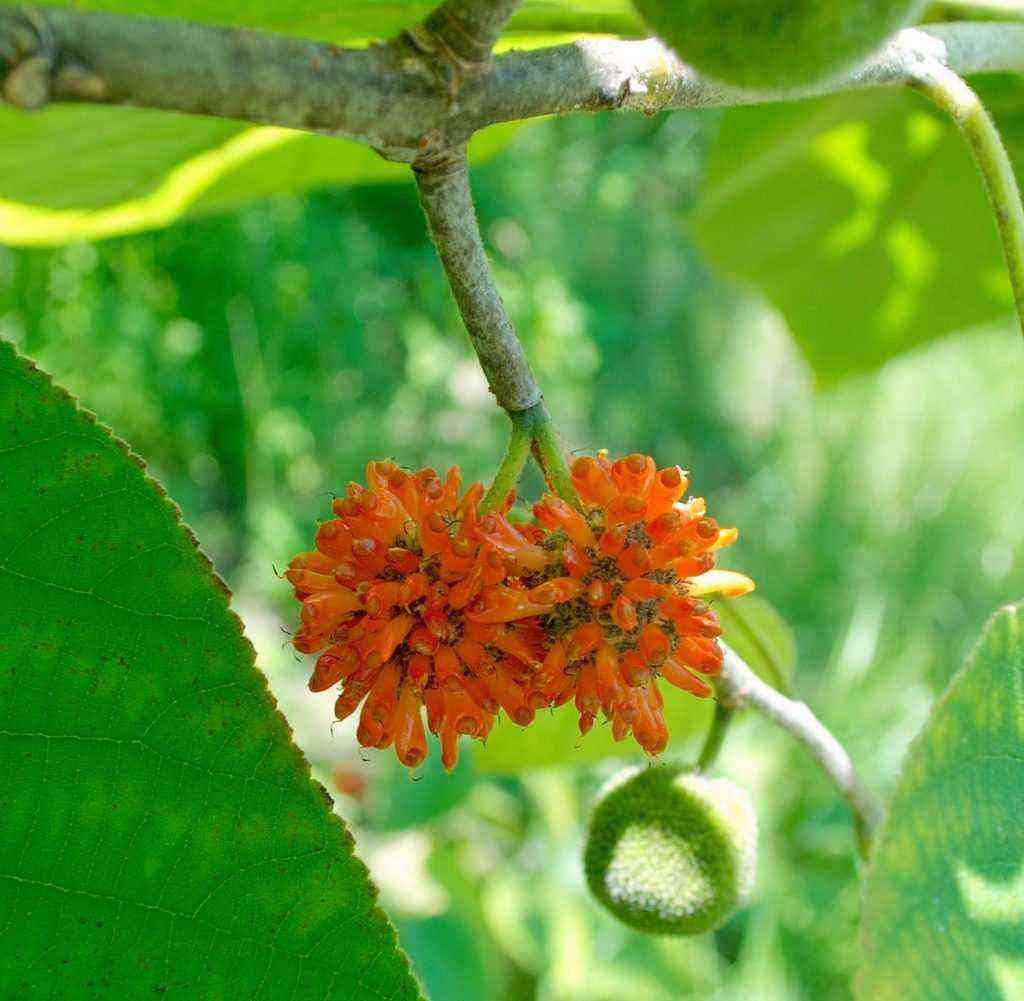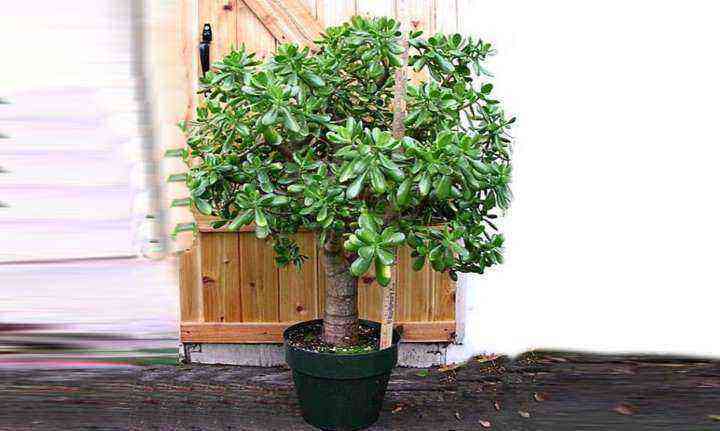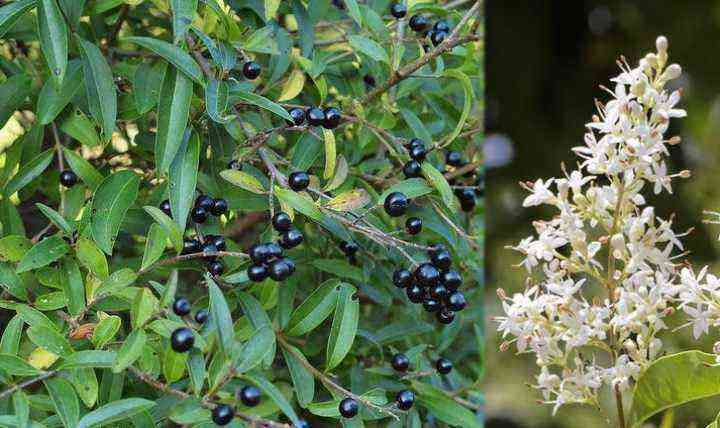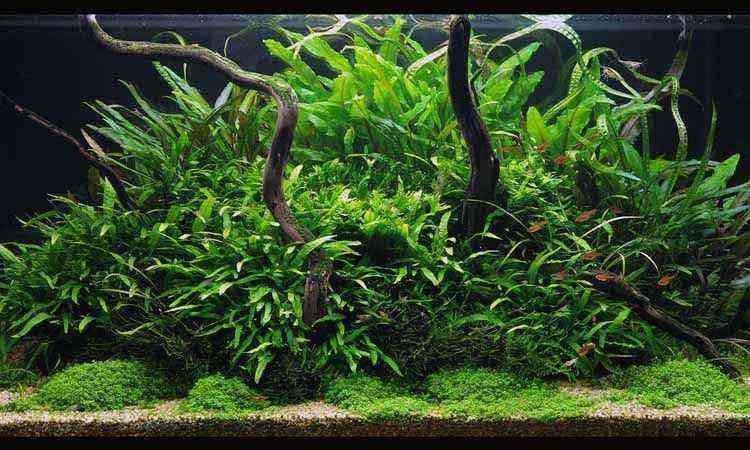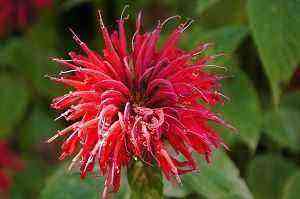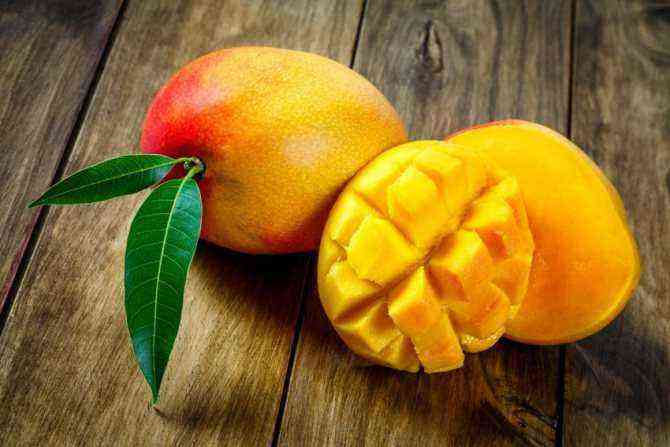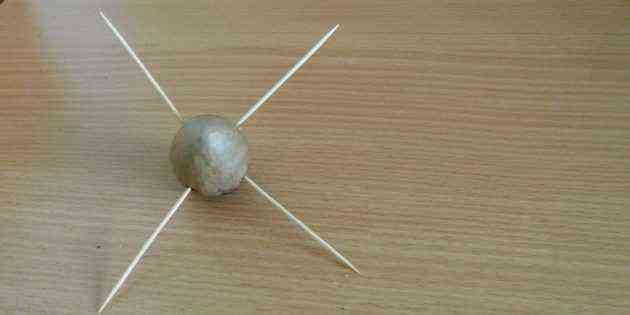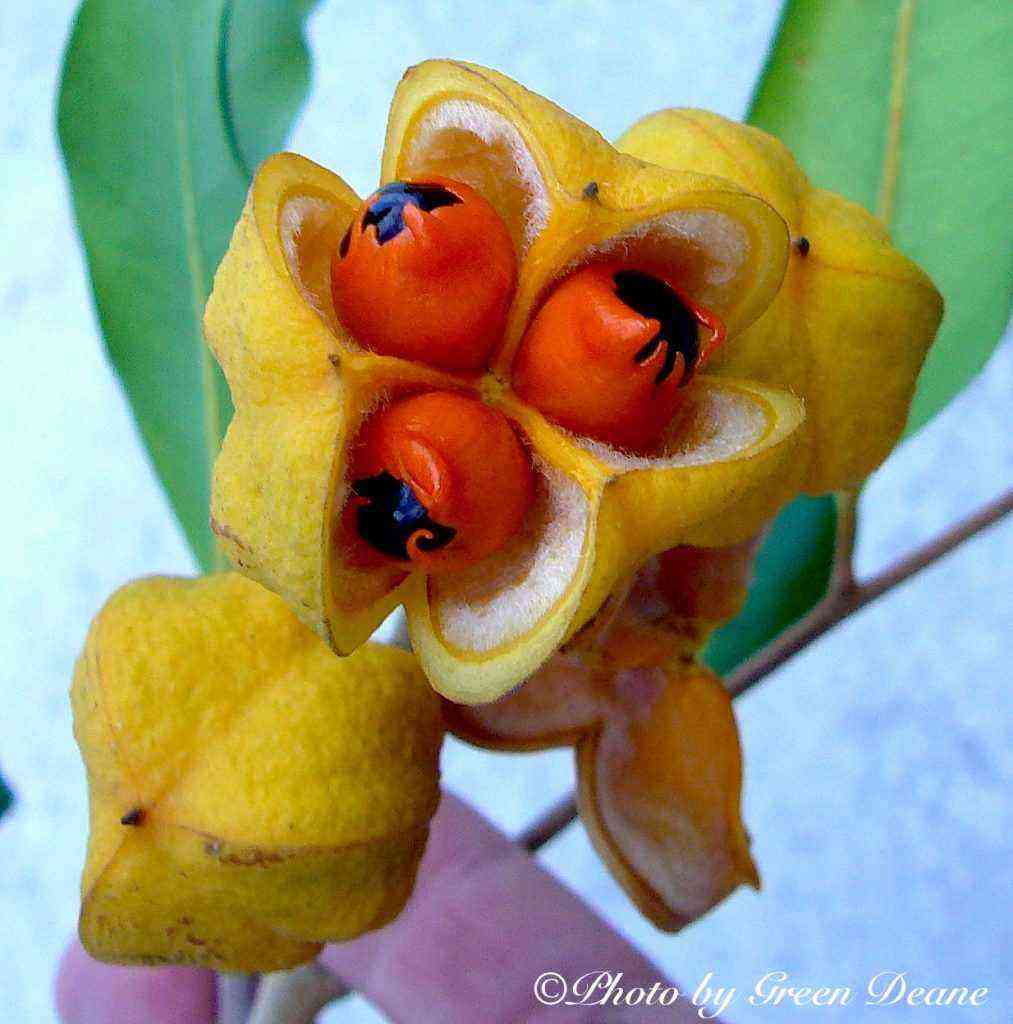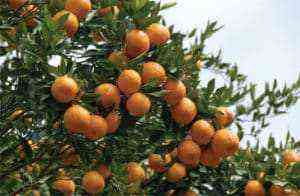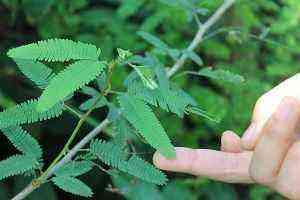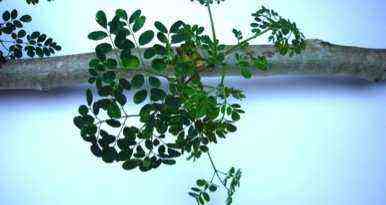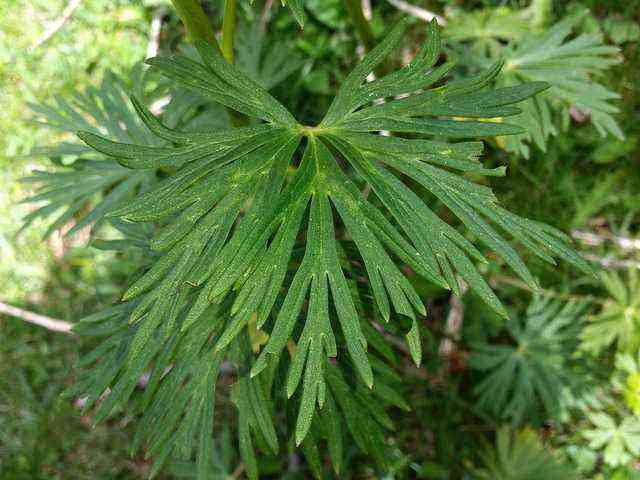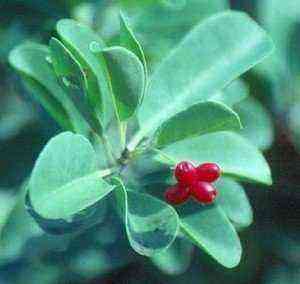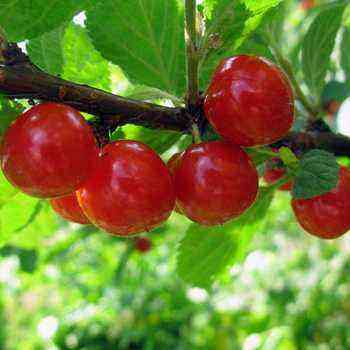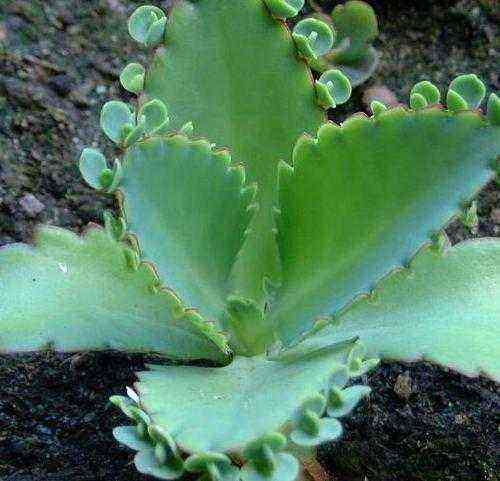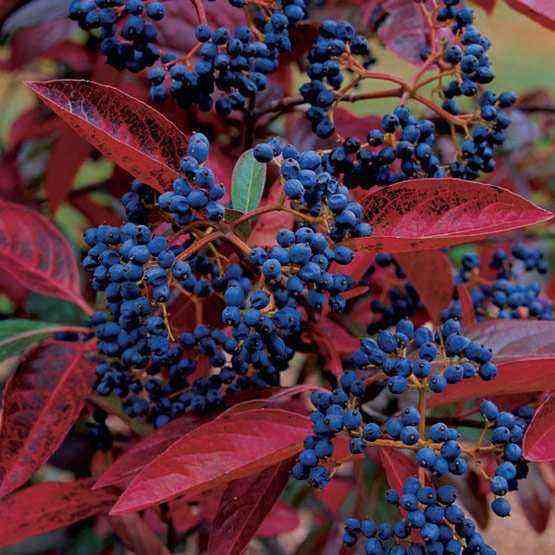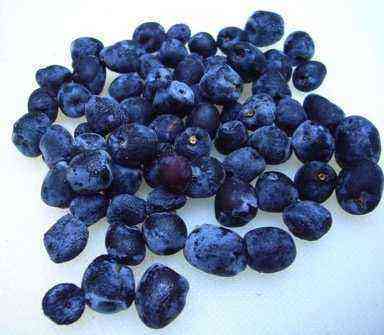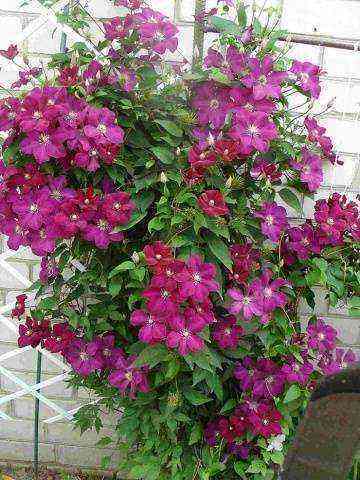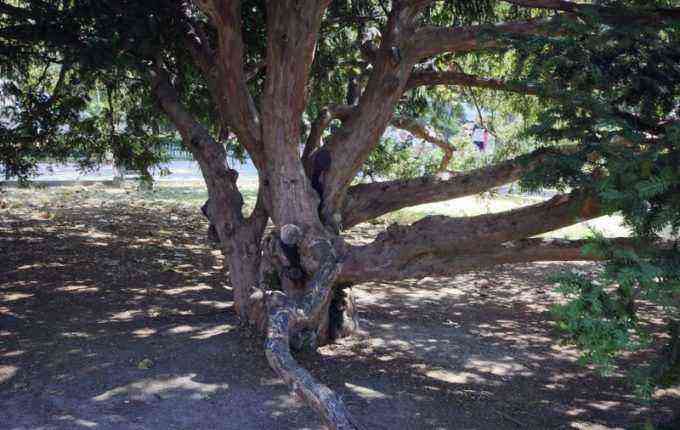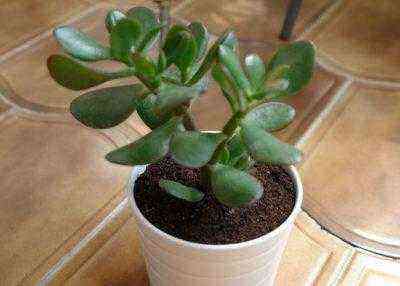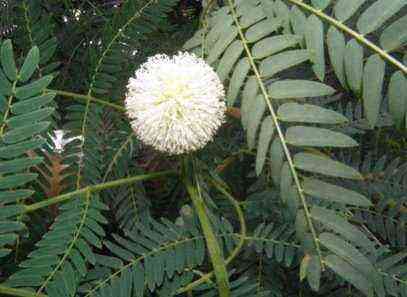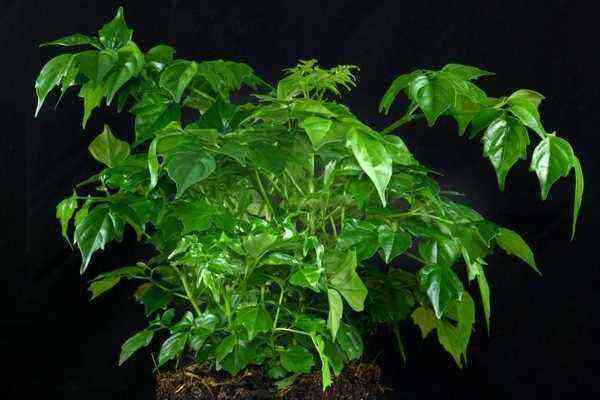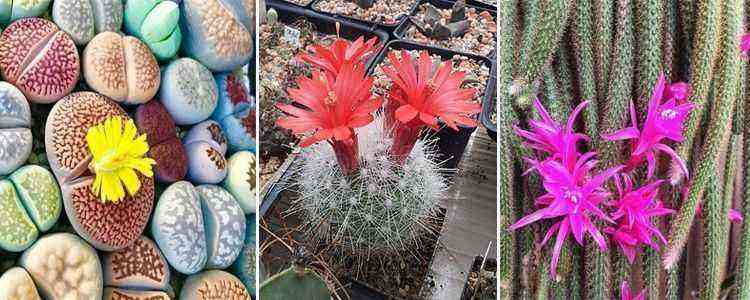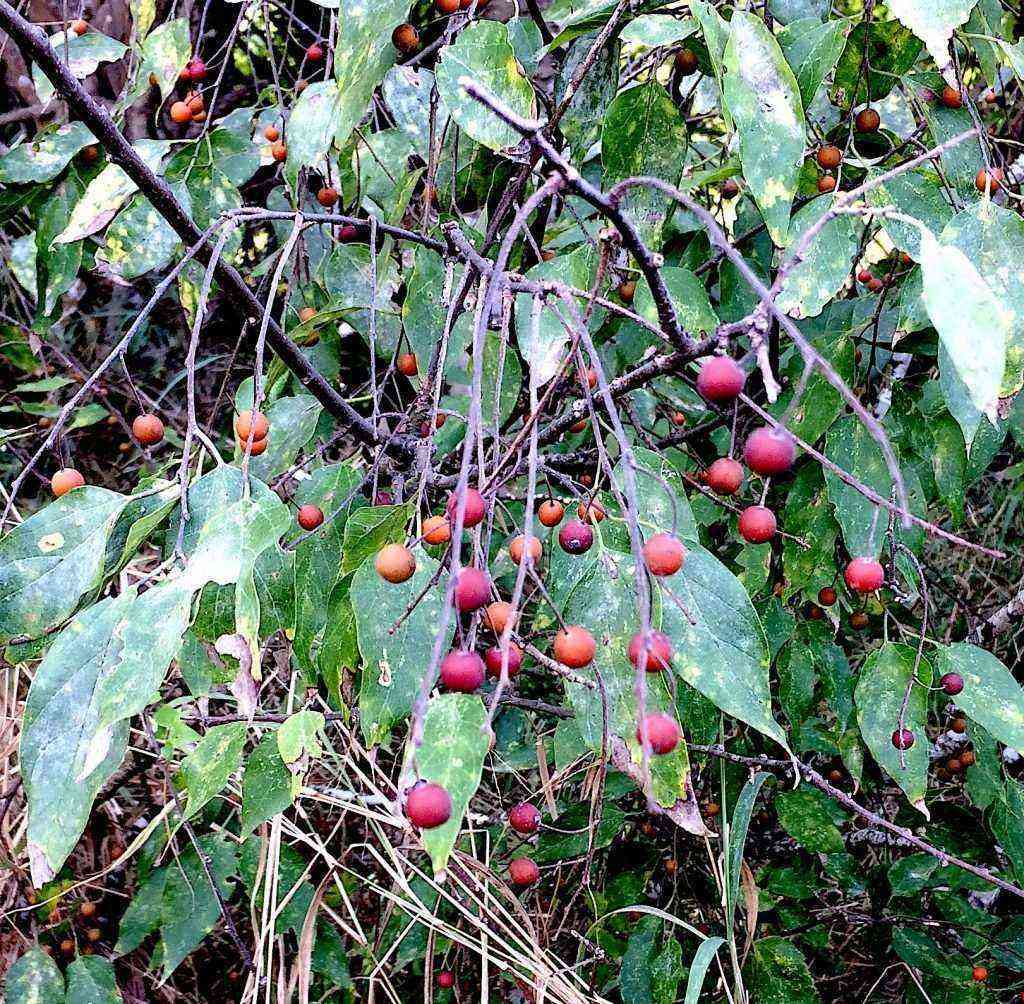It is an exotic deciduous plant with large fruits that reaches 23-27 m in height. It belongs to the Mulberry family, genus Artokarpus. The birthplace of the breadfruit is New Guinea, but today you can see this exotic in most tropical countries.
The plant earned such popularity with its high yield: the fruiting period lasts up to 9 months, and the average weight of one fruit exceeds 3 kg.
More than 150 fruits are harvested from one mature tree per season.
Outwardly, they are pear-shaped, about 30 cm long. Unripe fruits have a greenish color, eventually acquiring a yellow-brown hue.
Their ripeness is also determined by the presence of latex droplets, which appears on the surface of ready-to-eat fruits.
The breadfruit has large leaves of various shapes: from whole to pubescent pinnately dissected. Depending on climatic conditions, the plant can remain evergreen or shed its foliage with a slight cold snap.
Description of the breadfruit
This plant can reach height 26 meters… Outwardly, it resembles oak… The bark is smooth, gray.
There are branches on the tree that are thicker than the rest. This is explained by the presence of leafy side branches. The remaining branches are long and thin, and at their ends there are bunches of leaves.
The variety of foliage makes this tree unique. Very often you can find on this plant both pinnately dissected and whole leaves, which appear earlier than the first. Differs in foliage and degree of pubescence. The shape of the breadfruit depends on the climatic conditions of the region in which it grows. It can be evergreen or deciduous.
If the conditions are favorable, then the plant forms greenish nondescript flowers. Male flowers are presented in the form of oblong inflorescences-brushes. They bloom first. Female flowers are in the form of large buds. The pollinators of such a plant are bats. With the formation of the ovary, the female flowers are gradually transformed into a large fruit, which eventually becomes similar to a gnarled melon.
The fruits can grow singly or in bunches. Each part of this plant is made of sticky latex that is milky in color.
Description of fruits
Based on the information that is available today, we can say for sure that the tree has two subspecies:
- Cultural… The seeds in its fruits are completely absent.
- Wild… There are only seeds in its fruits.
This plant is high yielding. In one year, approximately 150 – 700 fruits can be obtained from one adult plant. If you recalculate these figures by weight, you get about 500 – 2500 kilograms. If the plant is provided with favorable conditions, then it can bear fruit throughout the year, having arranged for itself a break of 3 months.
It can be harvested for 65 years. A distinctive feature is the rapid increase in height. The plant can grow about 1 meter per year.
During the formation of the ovary is green. But, the closer to the moment of ripening, the more the color changes and approaches yellow-green. The ripe fruits are considered to be brown-yellow in color. In diameter, the size of the fruit can reach 30 centimeters. If this figure is converted into mass, then one berry weighs approximately 4 kilograms. Quite hard unripe fruits. Inside them there is a starchy fibrous pulp of white color. But when the crop is ripe, it becomes soft, the flesh will acquire a yellow or creamy color and a sweet aftertaste.
How to choose
To buy a good fruit, you need to click on the peel and tap on it. Ripe will be elastic to the touch, ringing vibrations are heard when tapped. Unripe makes a hollow sound and will be too hard. The skin should be yellow or sandy. Inside the ripe fruit, there is a juicy pulp of a milky, vanilla or creamy shade. It is recommended to cut the fruit with gloves, as a sticky liquid oozes from it. It is better to entrust this operation to sellers, who will quickly and neatly divide it upon purchase.
Eating fruits
For some regions, its fruits are a valuable source of nutrition… They eat the pulp of ripe fruits in raw, dried, baked and boiled form. You can also add sugar to the pulp and grind. This mass is used to make pancake dough.
Unripe fruits taste good too. Many people eat sweet and ripe fruits that replace fruits. The maturity of a fetus is determined by its color and the drops of milk latex that cover the surface of the fetus.
In the process of frying, the taste of the fruit becomes similar to that of a potato. When the pulp is removed from the fruit, it should be used immediately. But crackers from this product can be consumed for several years. To prepare crackers, you need to peel the peel, and cut the fruits into slices and wrap them in heliconia or banana leaves. Only then can you put it in the container and close it.
Related article: Long-pointed magnolia description and features
After the lapse of time in the container, fermentation begins and the pulp turns into a doughy mass. Its peculiarity is that even after several years it retains its original taste. But the mass in this form is not used. It should be wrapped in fresh heliconia leaves and fried in coconut oil.
You can also eat the seeds of these fruits, but only after frying or boiling, sprinkle with salt.
Application in medicine
In addition to excellent taste, the fruits of this plant contain many different vitamins. This makes the plant even more valuable.
The pulp of the fruit is rich in fiber. For this reason, it is recommended for people with disorders of the gastrointestinal tract:
Fiber is able to remove harmful cholesterol, metabolic products and toxins from the body. As a result, excess fat is burned and immunity is enhanced. This product is very useful for the prevention of rectal cancer. With the constant presence of fruits in your diet, you can reduce the risk of cardiovascular diseases.
Useful Properties
The pulp of the fruit contains a lot of starch – more than sixty percent. It contains both sugar (about 14%) and fats (1%). Dried fruits contain about 76,8% carbohydrates and up to 4,05% proteins. Caloric content – 103 kcal per 100 grams of product.
The fruits are also rich in minerals – potassium and magnesium, copper and calcium, phosphorus and sulfur, manganese and iron. Of the vitamins, the pulp contains the most vitamins B6 and C. In small amounts, PP, A, B9 are contained. In addition, substances such as choline, folic acid, some amino acids, and retinol are present.
Application in other industries
The breadfruit is fully utilized by man, not just the fruit. The seeds can be roasted or boiled. They contain almost no fat and contain 8% protein. They taste like a nut. The leaves of this plant are fed to herbivores. Elephants are very fond of them. Horses eat bark and branches well.
After drying, the inflorescences of male flowers are used as a repellent… When burned, the smoke from it drives away mosquitoes and midges. Musical instruments and furniture are made from wood. The wood of this plant is very light. It is because of this quality that it serves as a good material for surfboards.
Plant trunks are invaluable fuel. The inner bark layer is used to produce a very soft tissue from which to make ritual garments, loincloths and bedding. Bark is a strong good material for reliable ropes that are not affected by moisture.
The boats are treated with gum. Latex is used as glue and chewing gum.
This tree was also used in folk medicine: flowers are removed from toothache, latex is rubbed into the skin to relieve inflammation in some cases, fungal diseases are treated with a leaf remedy, bark relieves headaches, and a mixture of crushed leaves and latex is used for ear pains.
Distribution
The first information about this plant appeared at the end of the 17th century. This information was brought to the whole world by the English navigator William Dampier. And 100 years later, a terrible famine broke out in Jamaica. This forced the government to take an unusual step. They ordered an unusual tree to be grown as a cheap food for the slaves. This task was entrusted to the frigate “Bounty”. He went to the shores of the island of Tahiti for seedlings, but failed.
And only in 1793, the first to taste the fruits of this plant were the inhabitants of the islands of St. Vincent and Jamaica. And already after them this unusual taste was felt by the inhabitants of other cities of the West Indies archipelago. Today, the tree is familiar in appearance and taste to the inhabitants of many countries that are located in the tropical zone.
Characteristics of the plant and its fruits
Breadfruit berries are used in folk medicine. They cleanse the body and strengthen the immune system. The plant itself can be found in New Guinea. Under natural conditions, a breadfruit reaches a height of 26 m. It is often compared to an oak tree.
But this plant is distinguished by a smooth grayish bark and thickened branches. The photo demonstrates the uniqueness of this plant.
Breadfruit combines feathery and whole leaves, differing in the degree of pubescence. Depending on the growing conditions, the plant can be deciduous or evergreen.
In the spring, it forms inconspicuous green flowers, first there are male, then female, presented in the form of large buds. Breadfruit (zhamalist tree, as it is popularly called) is pollinated by bats.
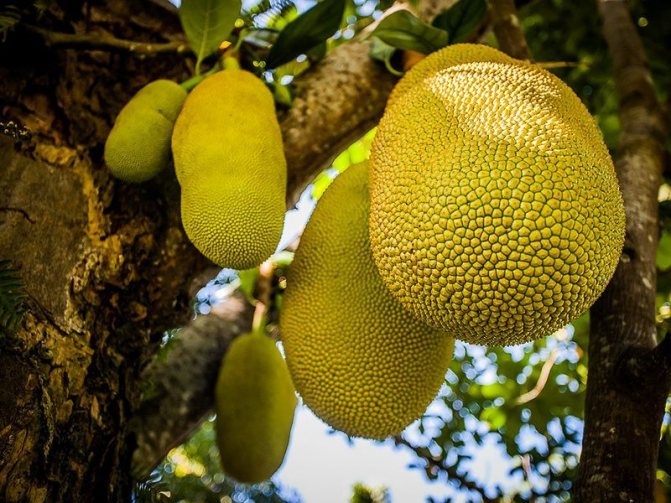
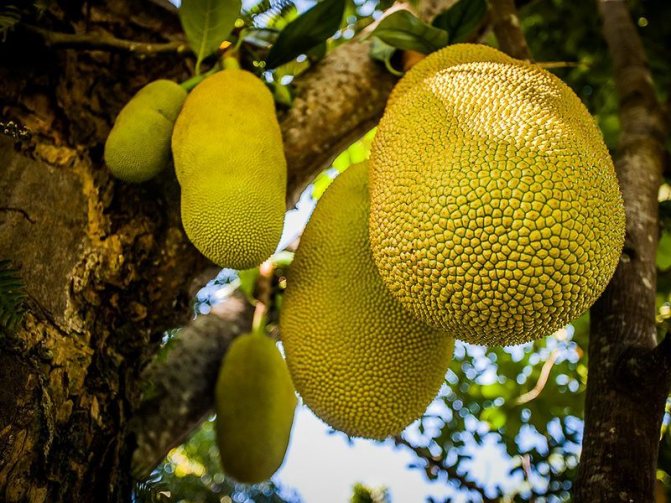
When the plant begins to form ovaries, its flowers turn into fruits that have the shape of an elongated melon. The breadfruit is a very interesting plant. In some places its fruits are solitary, in others they form clusters. Under natural conditions, breadfruit produces a good harvest.
Related article: Flakurtia Indian description and features
If the cultivated plant is properly cared for, 200 – 300 berries can be harvested per season. The peculiarity of the breadfruit is that it bears fruit all year round.
Every 12 months the plant grows by 80 – 90 cm. Only the resulting fruits have a greenish color. The berries of the plant, suitable for human consumption, are brown in color. Depending on the temperature regime, the size of one berry can reach 25 – 27 cm.
To understand whether the fruits are ripe or not, you need to open them. If they are not yet fully ripe, you will see white pulp with fibers.
Looks like
Artocarpus is a tall, large tree with a thick trunk. It stretches up to 25 m in length and more. In a favorable climate, it grows rather quickly – by 60-100 cm per year. Good growth requires heavy rainfall. At the same time, the plant can withstand 2-3 dry months. It also tolerates temperature changes well. Trees can grow in conditions from +40 to 0 degrees. The bark of the tree is gray, the crown is branched. Evergreen and deciduous species are found among this species.
Leaves have variety. In some plants, they are whole, in others they are feathery, with an edge. The foliage is dense, large, with a wide surface. The plant belongs to the monoecious type, that is, there are female and male flowers on the same trunk. Their appearance varies greatly, depending on the type of tree. On some varieties, small white flowers appear, on others – beautiful large pink and orange cups. Female inflorescences are combined into one cluster, of which fruits are subsequently formed. They often hang in whole bunches.
The breadfruit is very fertile. In good climates, it produces crops for nine months. From one plant, 200-700 fruits are harvested per season. With a lifespan of 70 years, the tree bears a gigantic amount of fruit. Among the plants, there are wild and cultivated varieties. The latter have larger fruits and almost no seeds. However, cultivated species with seeds that can be eaten are also bred.
The “whims” of the breadfruit
Breadfruit places high demands on conditions of detention. It is not grown in Russia and neighboring countries. A special variety is cultivated at home – Jackfruit.
Despite the capriciousness, breadfruit normally tolerates drought, even if its duration is 3 months. To get a good harvest from a plant, it must be kept in conditions of high humidity.
The plant does not tolerate frost. If the air temperature even drops to -1 degrees for a while, it dies. The inhabitants of Oceania eat fruits. Fried berries, cut into pieces, taste like potatoes and are suitable for making fluffy dough. Some people like unripe fruits.
Certain varieties of ripe berries may taste like fruit. The disadvantage of fruits is that they are not suitable for long-term storage, they should be eaten immediately after peeling. Delicious rusks are made from breadfruit berries. It is curious to note that the seeds of the plant are also suitable for human consumption, they are boiled and fried.


Where grows
Nowadays breadfruit is cultivated in many tropical countries. It is grown in South America, Asia, and the African continent. In Africa, the spread of the plant helps solve the problem of starvation of the local population. In Haiti, Hawaii, there is a special program to provide food for Aboriginal people. It is called the “Life Tree Factory”. Breadfruit is planted in large quantities around settlements. A similar program exists in Nicaragua, where plant cultivation takes up a significant share of agriculture.
Calorie content and benefits of berries
Berries have beneficial properties, they improve the functions of internal organs. Breadfruit contains:
100 g of product contains 332 kcal. The berries of a bread plant, not subject to heat treatment, are used as feed for cattle. Due to its rich composition, the fruits are used in traditional medicine. They make up for the lack of fiber and prevent iron deficiency anemia.
Breadfruit is very useful for those who suffer from dysbiosis, constipation or flatulence. They are saturated with fiber, which cleanses the body of unnecessary substances. This component also burns fats and enhances the body’s defenses.

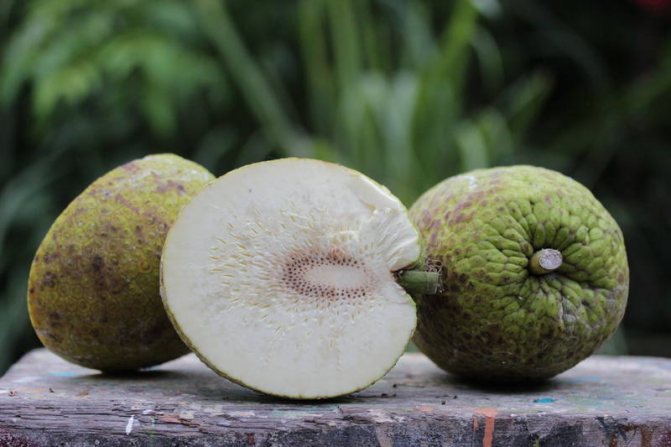
Who will benefit from
The above characteristic means that the chemical composition of the product is a real treasure of usefulness. By including it in the diet, you can improve immunity and cleanse your body of toxins.
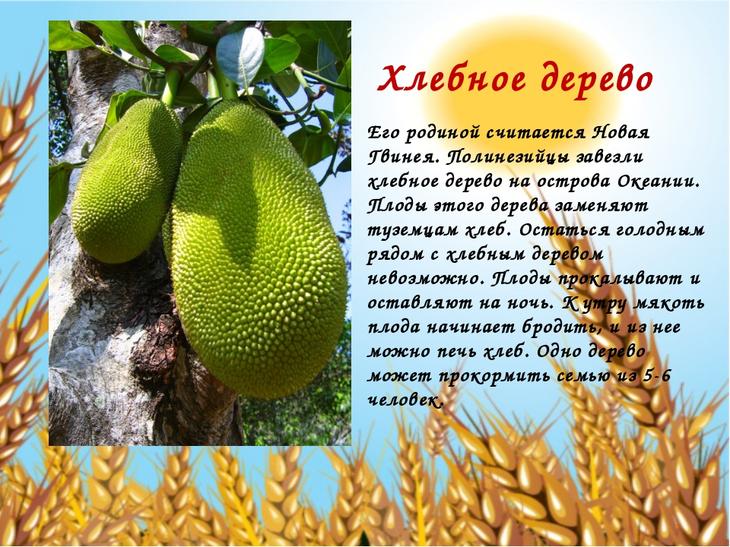
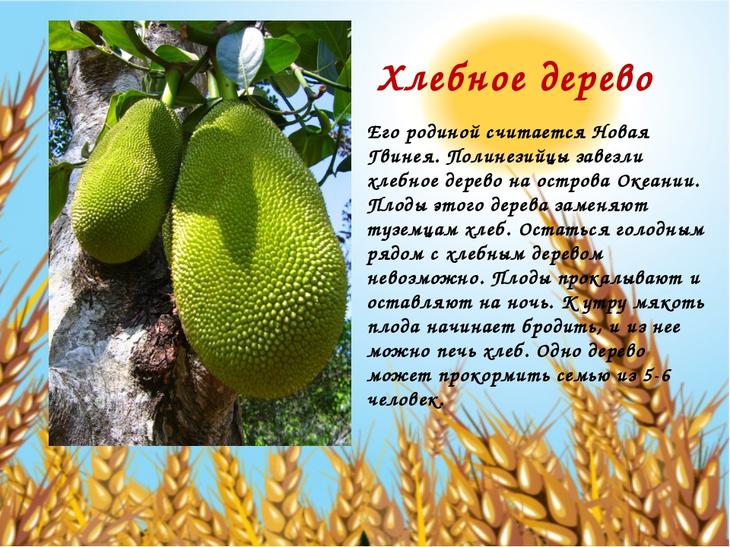
At the same time, an improvement in metabolism is guaranteed. Regular consumption will bring a supportive effect to people suffering from intestinal and stomach problems.
He also advises those who have risks of developing diseases associated with the heart and blood vessels.
Growing at home
A special variety of jackfruit is cultivated at home. For its affordability and rich composition, it is highly valued in India. The fruits of the plant are eaten regardless of the degree of ripening. The maximum weight of 1 piece is 18 kg. Ripe jackfruit tastes like a melon. The seeds of this plant are also eaten, mostly fried.
I will tell you how to grow a jackfruit houseplant at home. It is recommended to keep it as a masonry plant. So, you need to take a ripe jackfruit and pull out the seeds. Place them in warm water and let stand for 24 hours. I do not recommend storing planting material for a long time, otherwise it will lose germination.
Plant the houseplant in a 1 liter container. It feels good in a soil mixture of 40% peat, 40% sand and 20% humus.
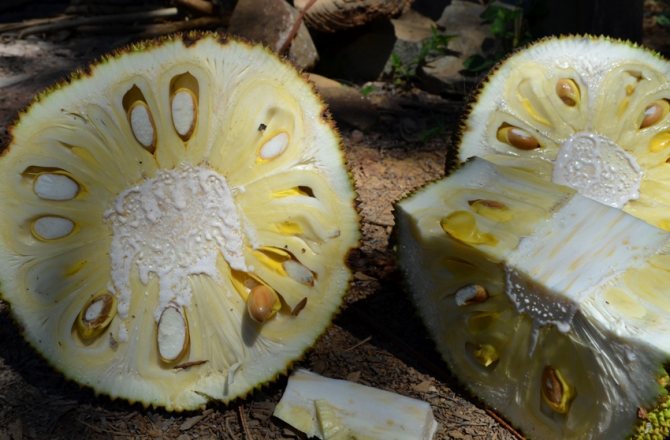

For proper air exchange, lay expanded clay on the bottom of the pot. Moisten the prepared potting soil before sowing jackfruit. Determine the seeds to a depth of 3 cm. It is recommended to keep them in a pot in a cool dry place.
When the seedlings turn into seedlings, it will be necessary to perform a pick, that is, transplant them into separate containers. During the procedure, be careful not to damage the fragile parts of the plant, including the roots. Jackfruit needs sunlight, I recommend keeping it on a windowsill. At the end of autumn, this plant has a dormant period.
Remember that breadfruit always needs moisture. Add water frequently, but do not fill the pan. After a while, you will need to prune the plant. Jackfruit does not tolerate a pick, however, like any other culture. But if you do not transplant it, the flowering will be disturbed. The subsequent container should be several centimeters larger than the previous one.
Now we know where the unique tree grows and how its fruits are useful. Even beginner gardeners are capable of growing Jackfruit varieties!
What is called the breadfruit
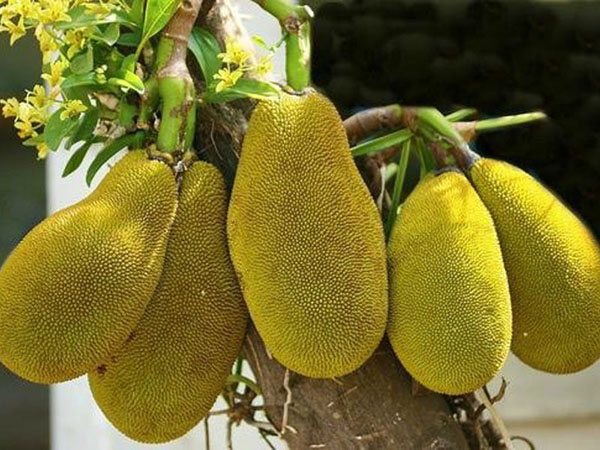

Is the breadfruit tree a myth or reality? Is there really a tree on planet Earth that bears fruit with loaves of bread, or is it simply called a plant that plays an important role in people’s lives? In fact, there is one tree on Earth that is called bread, since its fruits are really very similar to bread baked goods.
Related article: Melon tree Cundinamarca description and features
However, there are other plants that are sometimes called breadfruit, but in this case this expression is used figuratively.
This article will provide a photo and description of the breadfruit that grows on some islands in the Pacific Ocean, as well as talk about other plants in relation to which this expression is sometimes used.
Photos
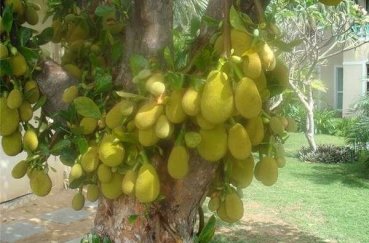

Breadfruit
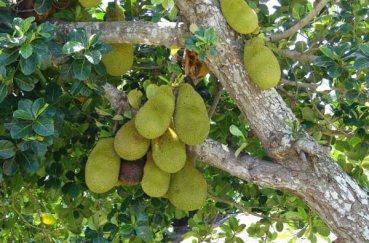
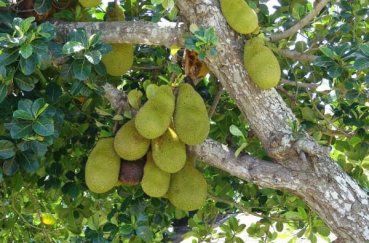
Breadfruit and its fruits

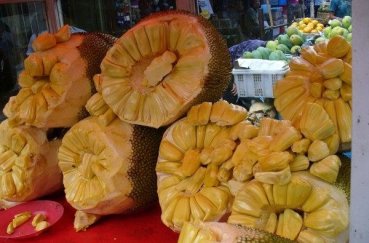
Breadfruit pulp
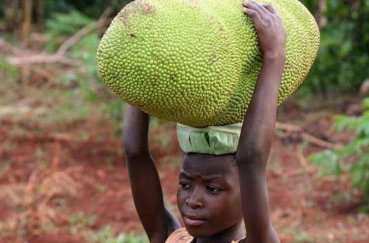
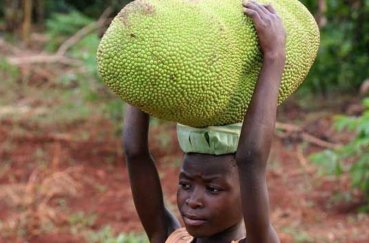
The native bears the fruit
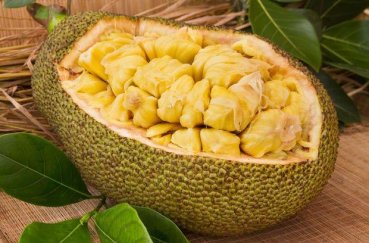

Jackfruit pulp
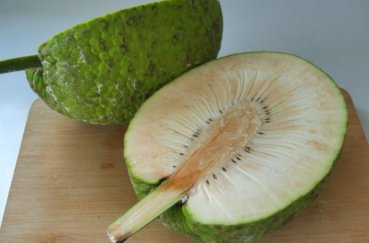
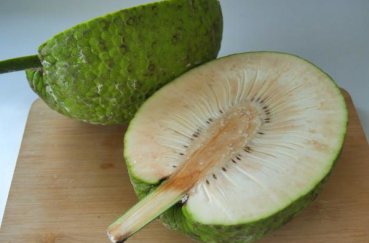
Unripe fruit in a cut
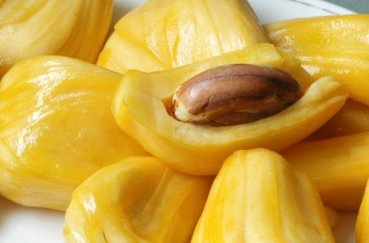

Breadfruit seeds

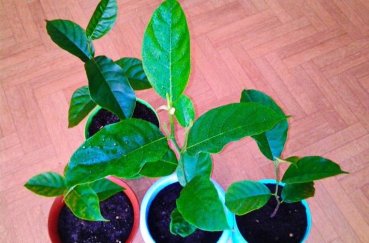
Jackfruit seedlings
Real breadfruit
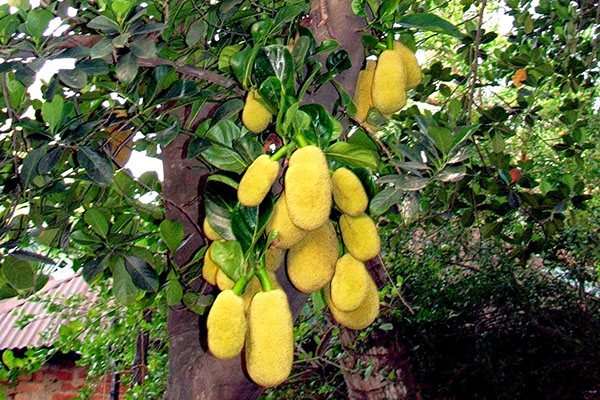
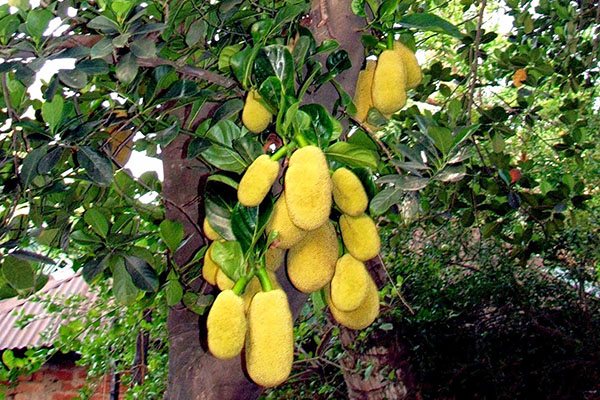
This plant grows on some islands in the Pacific Ocean, especially in its western part.
The tree has a height of about 20 m.The tallest specimens of this tree reach 30 meters in height
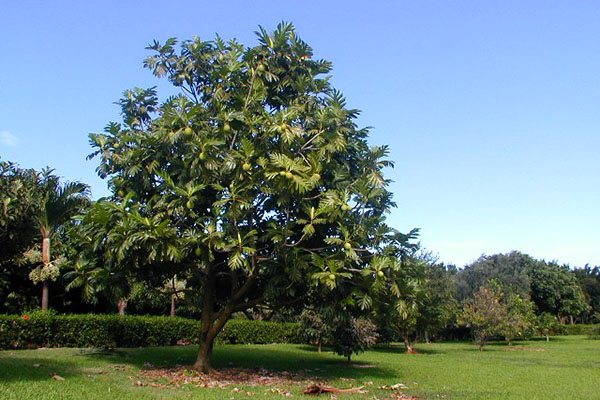
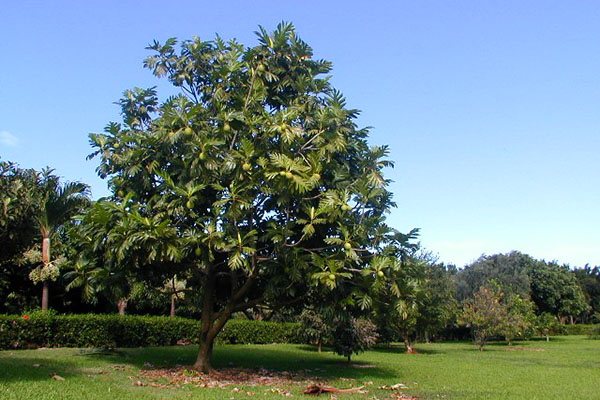
In some areas, the tree is evergreen, in others it periodically sheds leaves, in this matter a lot depends on the climate of the area in which this plant grows.
The life span of this plant is about 70 years.
At first, it blooms with green flowers, and after the formation of the ovary, fruits begin to grow.
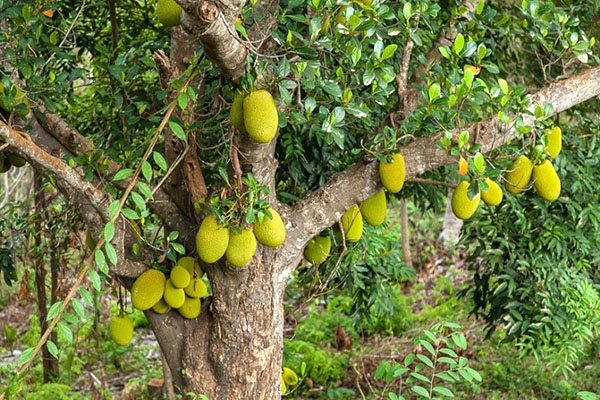
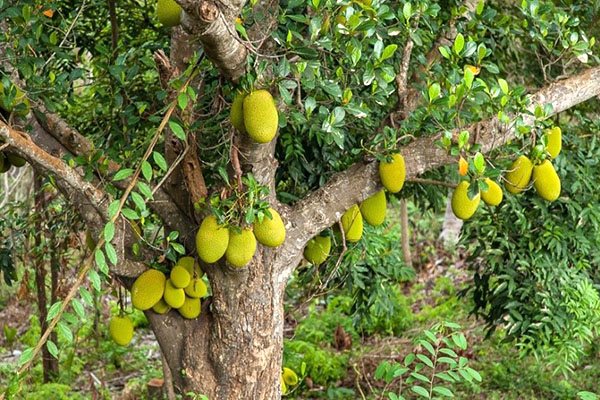
When ripe, they look like a melon. They can be yellow or with some brown tints.
The fruits of one ovary can weigh between 3 and 30 kg. The pulp of ripe fruits is used to bake bread, and that is why the tree began to be called bread tree.
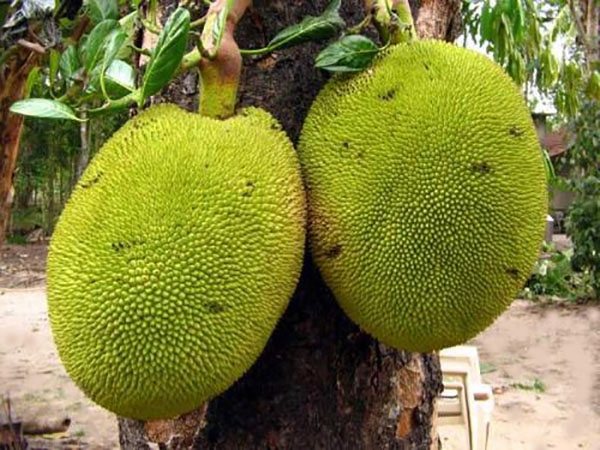
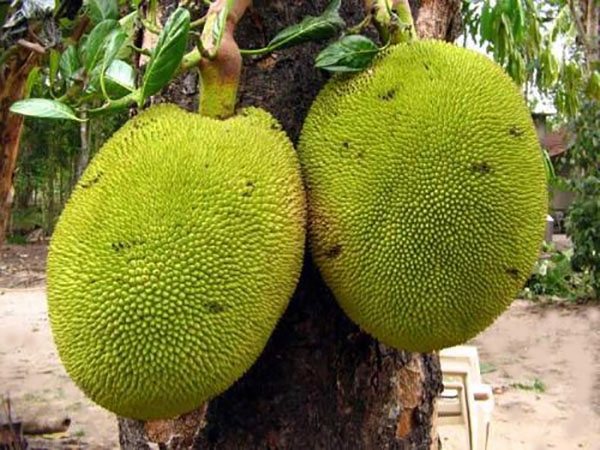
The pulp of ripe fruits is used not only for baking bread. It tastes like potatoes; these fruits are an important part of the nutrition of the peoples living in this area.

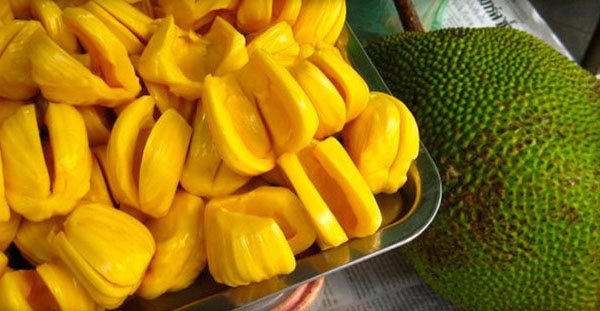
It is interesting that blanks, for example, crackers, made from pulp can be stored for several years without spoiling. This is a very important property of the breadfruit, which allows you to use this plant to the greatest advantage.
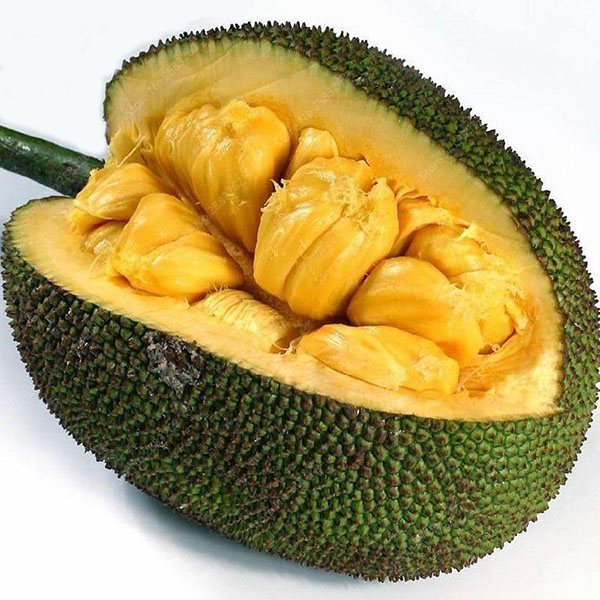
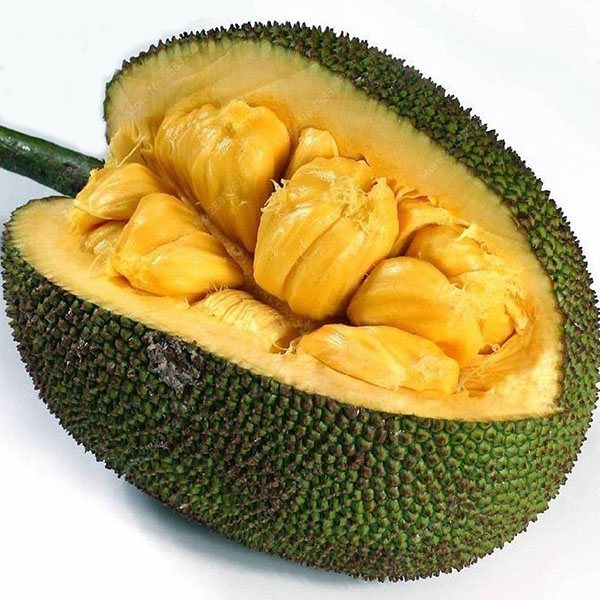
In fact, the use of the fruits of this plant in cooking is very diverse and wide. For example, fruits can be boiled, dried, baked, eaten raw, or even candied.
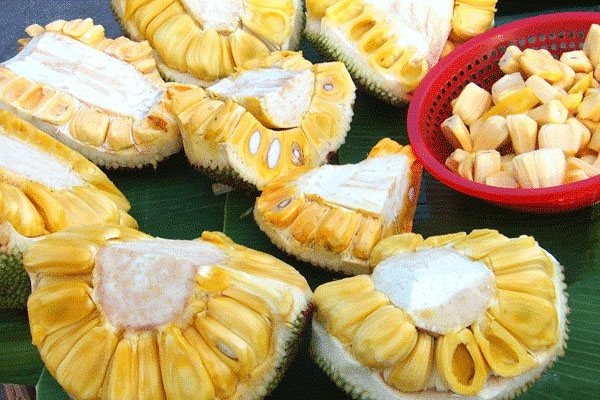
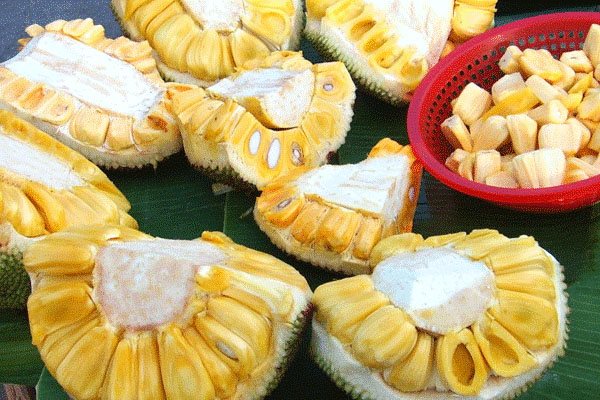
Moreover, the pulp of the plant is used to make bread dough. Fried foods are used as a side dish.
Moreover, the seeds of this plant are also eaten, for example, after pre-roasting.
Breadfruit, belonging to the mulberry family, is beneficial not only due to the growth of fruits on it. The leaves of these trees are fed to animals, and the wood is used for construction purposes. Boats, furniture are made from it, and they are also used for building houses.
It is believed that this wood is very resistant to the attack of parasites.
Thus, the expression “breadfruit” most often means a really growing plant. Sometimes it is also called jackfruit. The fruits of the tree are better known under this name. However, other plants are also called this expression. They will be briefly discussed in the next section.
Where do different types of breadfruit trees from the Mulberry family grow?
In addition to the breadfruit itself, other plant species are grown (there are about sixty of them in total).
The most famous are:

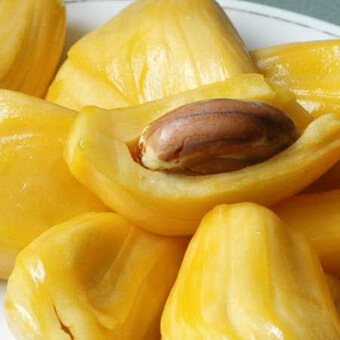
Jackfruit, or eve – an evergreen Indian breadfruit from the numerous Mulberry family. Its main differences from similar plants are that fruits can weigh up to 34 kg and reach a length of 25-110 cm with a diameter of less than 20 cm. This type of breadfruit grows only where there is enough moisture and sun. India is considered its homeland, although jackfruit is grown in eastern Africa (Uganda and Kenya), the Philippines and Southeast Asia. In southern India, eve’s popularity can be compared to mango and banana. But it is rarely found in the islands of Oceania and in the South of America. This is due to the fact that jackfruit waste has a very specific unpleasant odor that ordinary breadfruit does not have. On the territory of Sri Lanka, eve is grown for the sake of good wood.
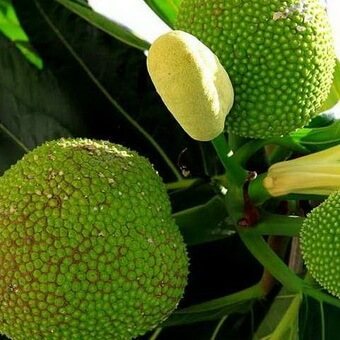
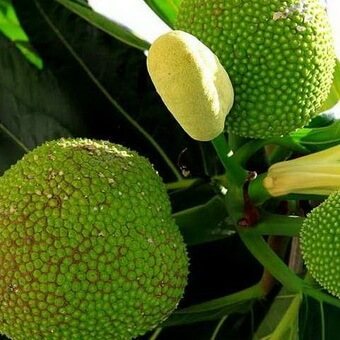
Champedak, which is distinguished by long brown hairs on young leaves, shoots and pedicels. The fruits grow on the trunk or hang from wide branches. They resemble eve fruits, but have a strong, pleasant aroma. The pulp has a rich yellow hue, in contrast to the creamy breadfruit. Wild and cultivated Champedak are not alike: in the wild, it grows up to 35-40 m, in economic plantings – no higher than 18 m. The fruiting period lasts two summer months – July and August.
The so-called “breadfruit”
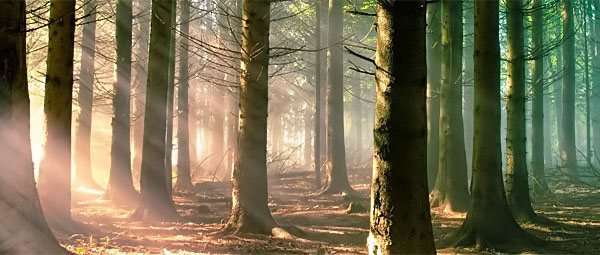
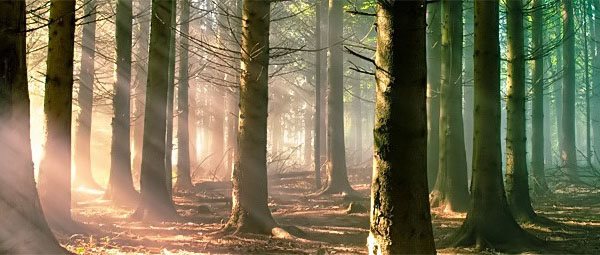
Sometimes the expression “breadfruit” is applied to the cedar that grows in Siberia. As you know, due to the temperature regime in Siberia, conditions are very harsh, and they are very difficult for the survival of people, animals and plants. Largely thanks to the cedar, life in such a climate is possible. In addition to wood, which is very highly valued by the cedar, the microclimate of the cedar forests is such that mushrooms and berries grow in it, animals live freely, and this is important in the harsh Siberian conditions.
In relation to the Cedar, the word “bread” means that this tree literally feeds Siberia and its inhabitants.
In addition, pine nuts are a significant part of the diet of people living in Siberia.
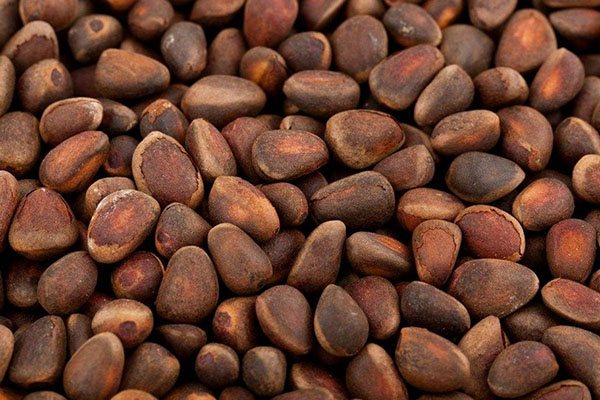
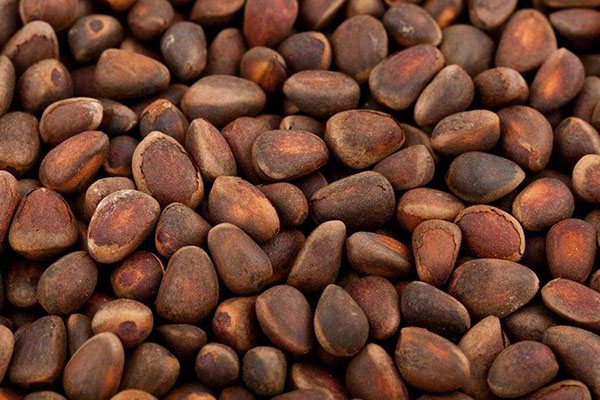
In addition to their high calorie content, they have a great variety of useful properties, minerals and vitamins that the human body needs. Due to the lack of fresh fruits and vegetables in that area, it is thanks to the pine nut that the human body receives a significant part of the nutrients, as well as calories.
The breadfruit is sometimes referred to as a single houseplant, also known as pakhira. This plant is similar in appearance to jackfruit.

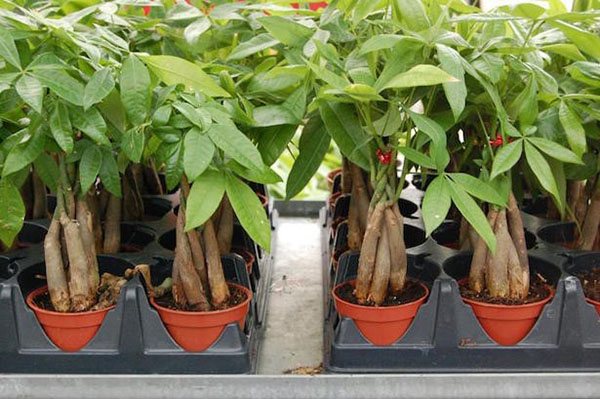
Of course, it does not bear fruit in the same way as a breadfruit. However, these two plants are closely related. In order for such a breadfruit to feel comfortable at home, it needs special care and feeding.
As you can see from the information described in this article, the expression “breadfruit” can mean several plants growing in different parts of the world. Most often, they mean jackfruit – a tree that bears fruits similar to loaves of bread with tasty pulp, similar in taste and nutritional composition to potatoes. In addition, a houseplant can also be called a breadfruit. In a figurative sense of this word, the cedar is called bread – the tree that feeds Siberia.
